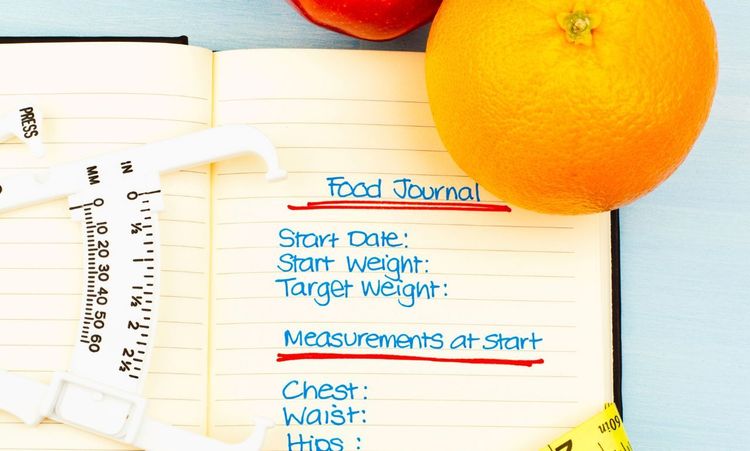Have you ever wondered why some people seem to burn calories faster than others? Two people can eat the same meal and do the same workout, yet one burns fat more efficiently. This isn’t luck — it’s biology, lifestyle, and effort working together.
Your body’s calorie-burning rate depends on multiple variables, from genetics to exercise choices. Some you can’t change, while others you can fine-tune. Understanding these differences helps you create a smarter, more realistic fitness plan that fits your body, not someone else’s.
Let’s unpack six factors that directly affect how many calories you burn and how to make them work for you.
Your Body Weight
The Heavier You Are, the More You Burn
Your body weight plays a central role in determining your calorie burn. The heavier you are, the more energy your body needs to move, maintain balance, and perform basic functions. This is because larger bodies require more oxygen and muscle activation during every movement — even walking across the room becomes a mini workout.
For instance, a 180-pound person burns more calories climbing stairs than someone who weighs 130 pounds, even at the same pace. The difference might seem small at first, but over time, it adds up. This is why heavier individuals often notice faster early weight loss when starting a fitness routine.
As weight decreases, though, calorie burn gradually slows down. The body becomes more efficient, meaning you’ll need to adjust intensity or duration to keep progressing. Think of it like a car: the heavier the load, the more fuel it needs; the lighter it gets, the less it burns.
Your Muscle Mass
Why Muscle Is a Metabolic Powerhouse
Muscle mass is one of the biggest calorie-burning engines in your body. Every pound of muscle uses more energy at rest than fat does. Fat is mostly storage, while muscle is active tissue that constantly repairs, maintains, and supports movement.
When you build muscle through strength training, your metabolism automatically speeds up. Even sitting at your desk, you’ll burn more calories than before. It’s a long-term investment that keeps working day and night.
Unfortunately, muscle is also easy to lose when you stop exercising or cut calories too drastically. That’s why combining resistance training with adequate protein intake is key. It’s not about becoming a bodybuilder — it’s about maintaining lean muscle so your metabolism stays switched on.
So if you want a practical strategy for consistent fat loss, focus on building and protecting your muscle mass. That’s where the magic happens.
Your Biological Sex
Men and Women Burn Calories Differently
Biological sex influences how efficiently your body uses energy. On average, men tend to burn more calories than women due to higher muscle mass and lower body fat percentages. Their testosterone levels naturally promote muscle growth, which gives them an advantage in calorie expenditure.
Women, on the other hand, are biologically designed to store more fat for reproductive health. This doesn’t mean women can’t burn calories effectively — it just means their baseline metabolic rate is slightly lower.
Hormones play a role, too. Estrogen, progesterone, and thyroid hormones fluctuate throughout a woman’s cycle, sometimes affecting energy levels and appetite. During certain phases, calorie burn may increase slightly, while in others, the body conserves more energy.
Understanding these biological differences helps set fair expectations. Instead of comparing progress to someone else, focus on your own rhythm. Consistency and patience matter more than quick results.
Your Age
Why Getting Older Changes Everything
Age is another powerful factor that affects how many calories you burn. As you get older, muscle mass naturally declines, especially after your 30s. Less muscle means a slower metabolism, even if your weight stays the same.
Part of this change comes from hormonal shifts. Testosterone and growth hormone levels decrease over time, and these hormones are directly tied to muscle maintenance. Meanwhile, activity levels often drop with age — more sitting, fewer workouts, less physical play.
But slowing metabolism isn’t an unchangeable fate. Regular strength training, balanced nutrition, and adequate protein can slow this decline. Staying active in your 40s, 50s, and beyond makes a massive difference.
You might not burn calories like your 20-year-old self, but you can still build strength and resilience. Aging gracefully isn’t about avoiding change — it’s about adapting smartly.
Your Workout Routine
How Consistency Shapes Your Metabolism
Your workout routine is the engine that determines how efficiently your body burns calories. Doing something is always better than nothing, but not all workouts deliver the same results. The structure, variety, and frequency of your exercises determine long-term success.
If you only focus on cardio, you might burn calories during the session but miss the muscle-building benefits that keep metabolism high afterward. Adding strength training, yoga, or mobility work creates a well-rounded system that keeps your body adaptable.
Rest days matter, too. Overtraining can backfire, increasing stress hormones and slowing recovery. Think of your fitness routine as a rhythm — it needs intensity and recovery in balance.
Ask yourself: Does your routine challenge your body without exhausting it? If not, tweak it. Consistency is key, but variety keeps your metabolism guessing and growing.
Your Workout Intensity
Push Harder, Burn More — But Smarter
Workout intensity is one of the most direct factors influencing calorie burn. The harder you push, the more energy your body demands. High-intensity exercises like interval training, sprints, or circuit workouts trigger something called the “afterburn effect.”
This effect — known scientifically as excess post-exercise oxygen consumption (EPOC) — means your body continues burning calories even after you finish. Your breathing, heart rate, and muscle recovery keep your metabolism elevated for hours.
However, intensity doesn’t mean punishment. Going all out every day leads to burnout or injury. Smart training cycles include high, moderate, and low-intensity days. Mixing them not only prevents fatigue but also supports better performance.
If you’ve ever finished a workout thinking, “That was tough but doable,” that’s often the sweet spot. Intensity should challenge your limits without breaking your motivation.
Conclusion
Calorie burn isn’t just about the gym — it’s about how your body operates every moment of the day. Weight, muscle, age, sex, and training habits all shape the pace of your metabolism.
You can’t change every factor, but you can influence most of them. Building muscle, staying consistent, and keeping intensity in check can dramatically shift how your body uses energy. Small habits compound — a few minutes of strength training, an evening walk, or an extra hour of sleep can all make a difference.
Remember, your body isn’t a machine. It’s a living, adaptive system that rewards care, patience, and consistency. Learn how it responds, adjust your approach, and the results will follow.
So the next time you wonder why your friend burns calories faster, remind yourself: everyone’s body runs on its own rhythm. Your job is to master yours.



